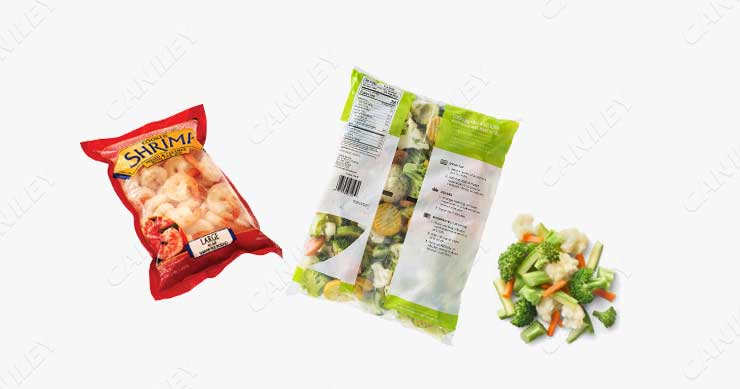Frozen food packaging is an essential aspect of the food industry. Do you know what is the process for frozen food packaging? The packaging process for frozen foods is designed to ensure that the products remain fresh, safe, and appealing during transportation, storage, and display. In this article, we will discuss the process of frozen food packaging and the materials used for it.

Selecting the right packaging material
The first step in the process of frozen food packaging is to select the right packaging material. The material used for packaging should be able to maintain the temperature of the frozen food, prevent the growth of bacteria, and protect the product during transportation. Common materials used for frozen food packaging include plastic, paperboard, aluminum foil, and flexible packaging materials like polyethylene.
Preparing the frozen product for packaging
Before packaging, the frozen food product needs to be prepared for packaging. This involves cleaning, sorting, and possibly cutting the product to the right size. The product must also be inspected for quality, defects, and any foreign materials that may have been introduced during processing.
Packaging
The next step is to package the product. Depending on the type of frozen food product, the packaging process may vary. For example, some frozen foods may require vacuum sealing, while others may be packaged in bags or containers. In some cases, the product may be packaged with additional materials such as absorbent pads or moisture control packets. of course, different packaging process need different frozen food packaging machine.
Labeling and coding
Once the frozen food is packaged, it needs to be labeled and coded. The labeling should include information such as the product name, ingredients, nutritional information, and any allergy warnings. The coding is used to track the product during transportation and storage.
Inspecting and testing
After the frozen food product is packaged, it needs to be inspected and tested. This is done to ensure that the packaging materials and process have maintained the quality, safety, and freshness of the product. Testing may include physical tests, microbiological tests, and sensory tests.
Storage and distribution
Finally, the frozen food product is stored and distributed to retailers or consumers. The product must be stored at the correct temperature and in the right conditions to maintain its quality and safety.
By following these steps, the food industry can ensure that frozen food products remain fresh, safe, and appealing to consumers.
